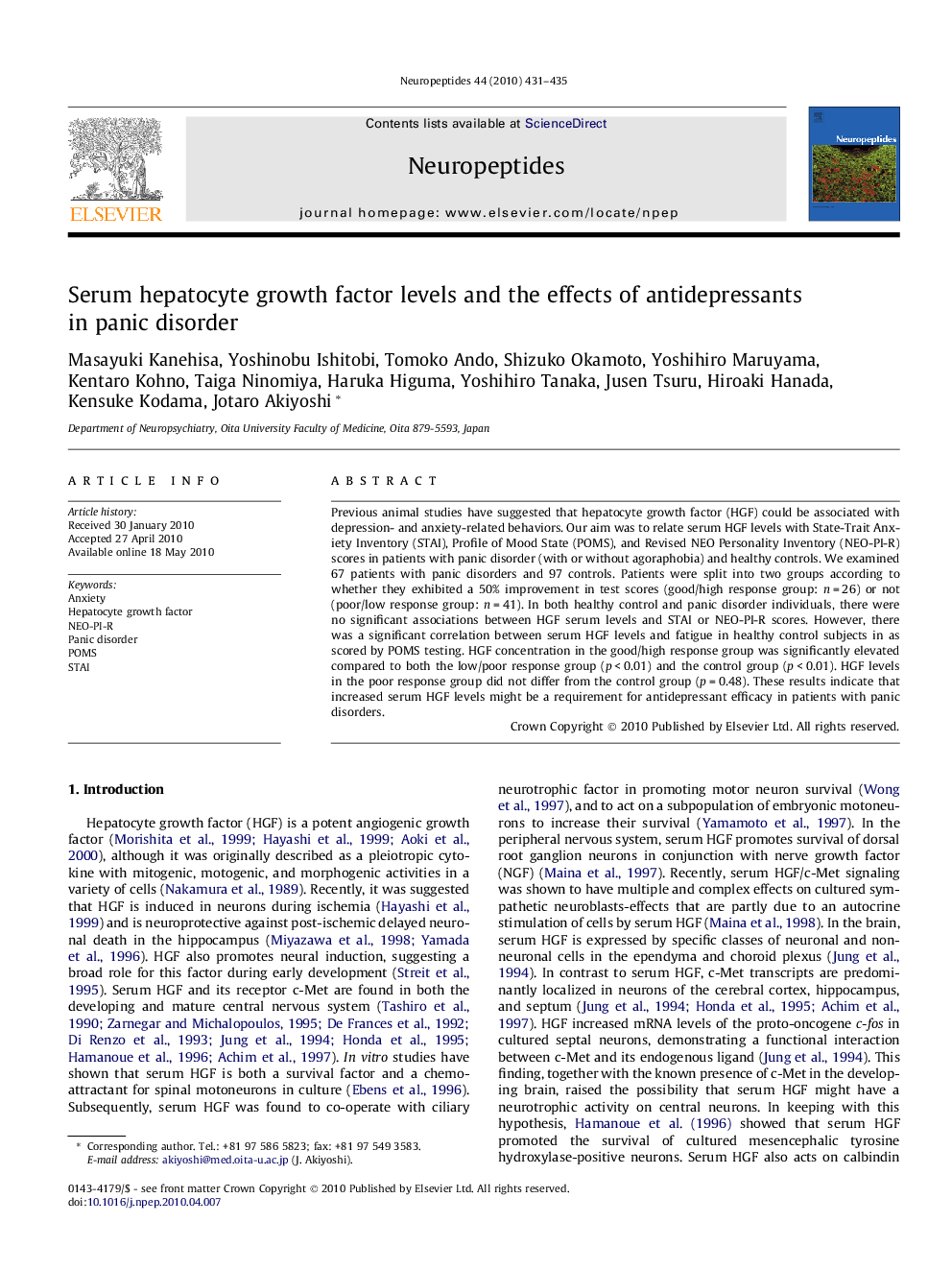| Article ID | Journal | Published Year | Pages | File Type |
|---|---|---|---|---|
| 2808211 | Neuropeptides | 2010 | 5 Pages |
Previous animal studies have suggested that hepatocyte growth factor (HGF) could be associated with depression- and anxiety-related behaviors. Our aim was to relate serum HGF levels with State-Trait Anxiety Inventory (STAI), Profile of Mood State (POMS), and Revised NEO Personality Inventory (NEO-PI-R) scores in patients with panic disorder (with or without agoraphobia) and healthy controls. We examined 67 patients with panic disorders and 97 controls. Patients were split into two groups according to whether they exhibited a 50% improvement in test scores (good/high response group: n = 26) or not (poor/low response group: n = 41). In both healthy control and panic disorder individuals, there were no significant associations between HGF serum levels and STAI or NEO-PI-R scores. However, there was a significant correlation between serum HGF levels and fatigue in healthy control subjects in as scored by POMS testing. HGF concentration in the good/high response group was significantly elevated compared to both the low/poor response group (p < 0.01) and the control group (p < 0.01). HGF levels in the poor response group did not differ from the control group (p = 0.48). These results indicate that increased serum HGF levels might be a requirement for antidepressant efficacy in patients with panic disorders.
